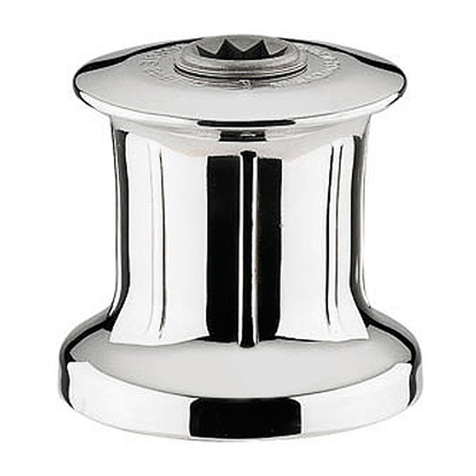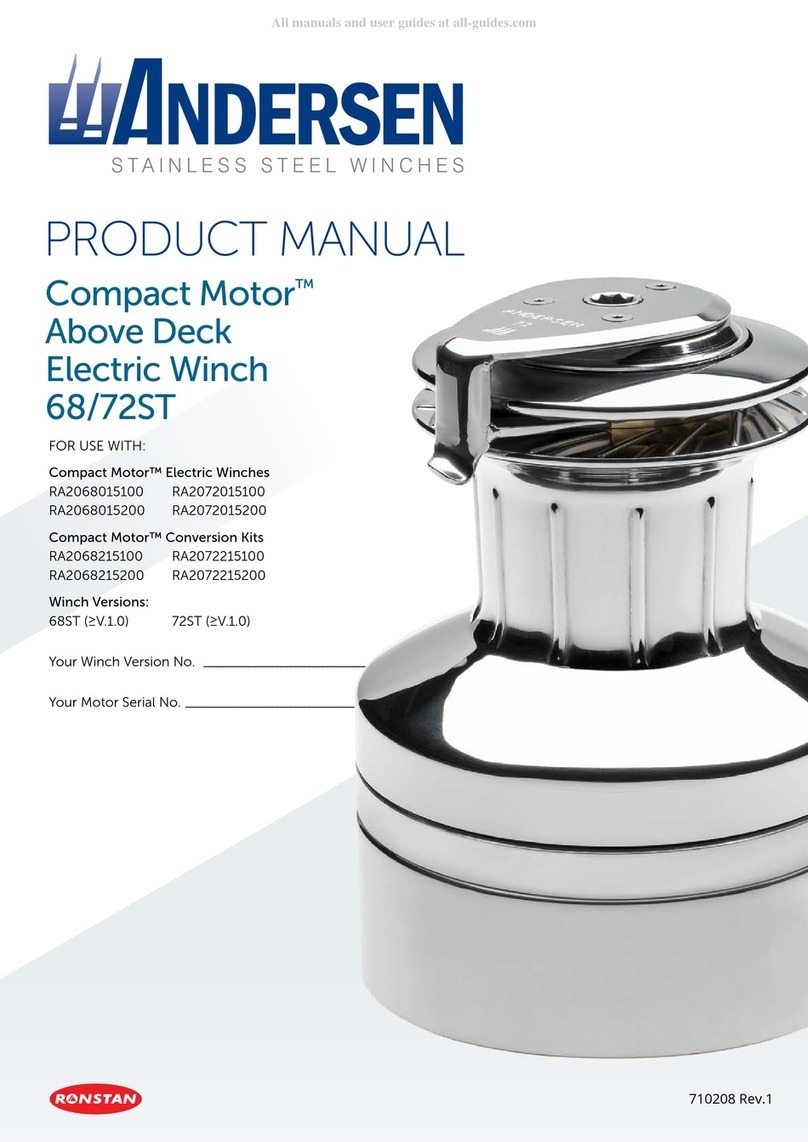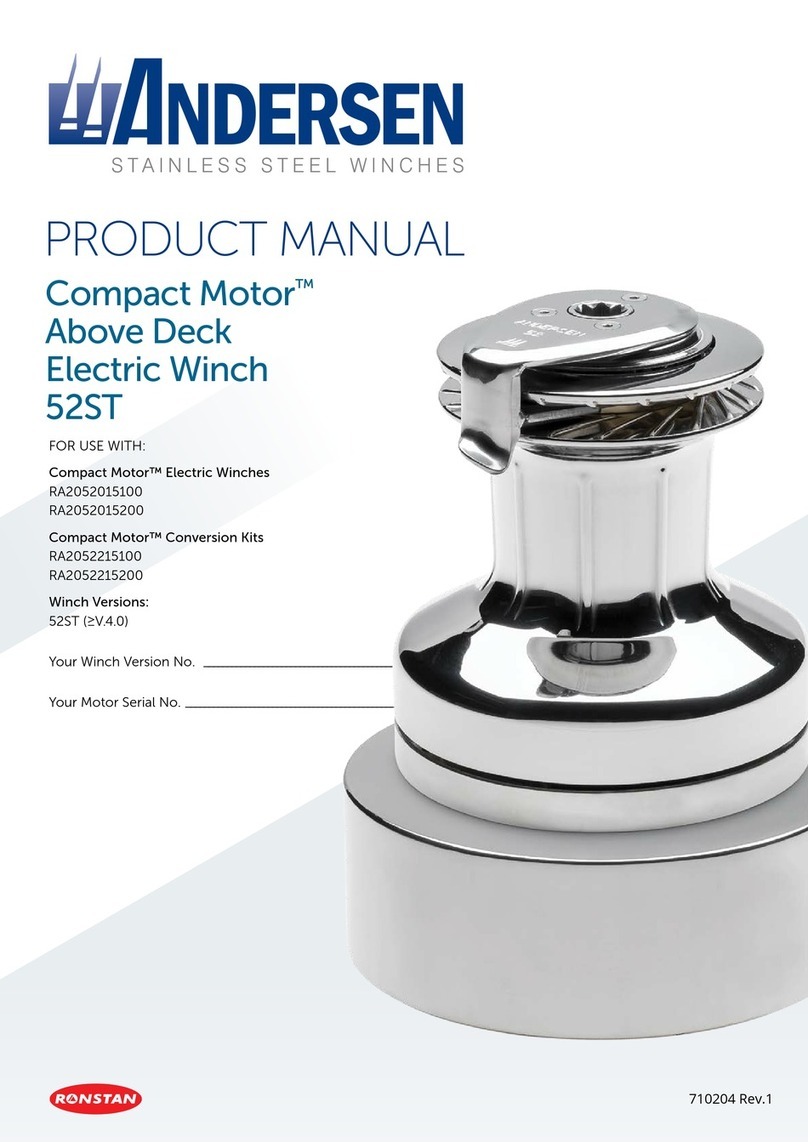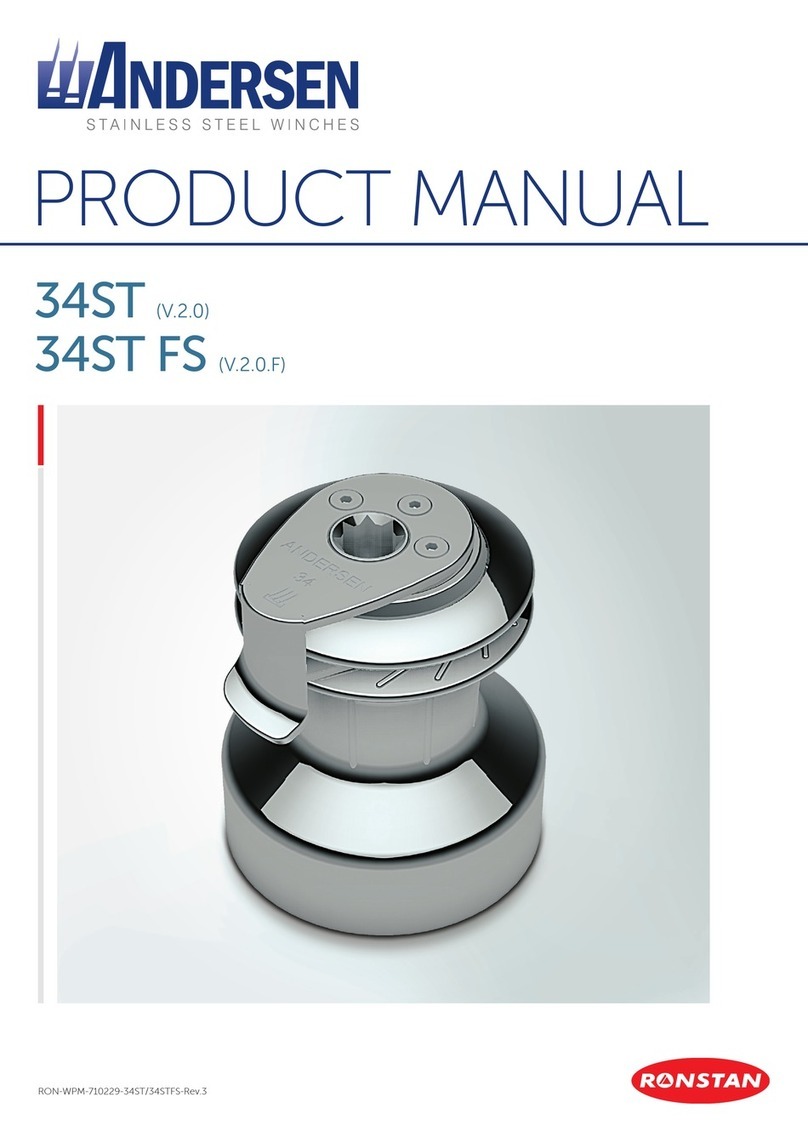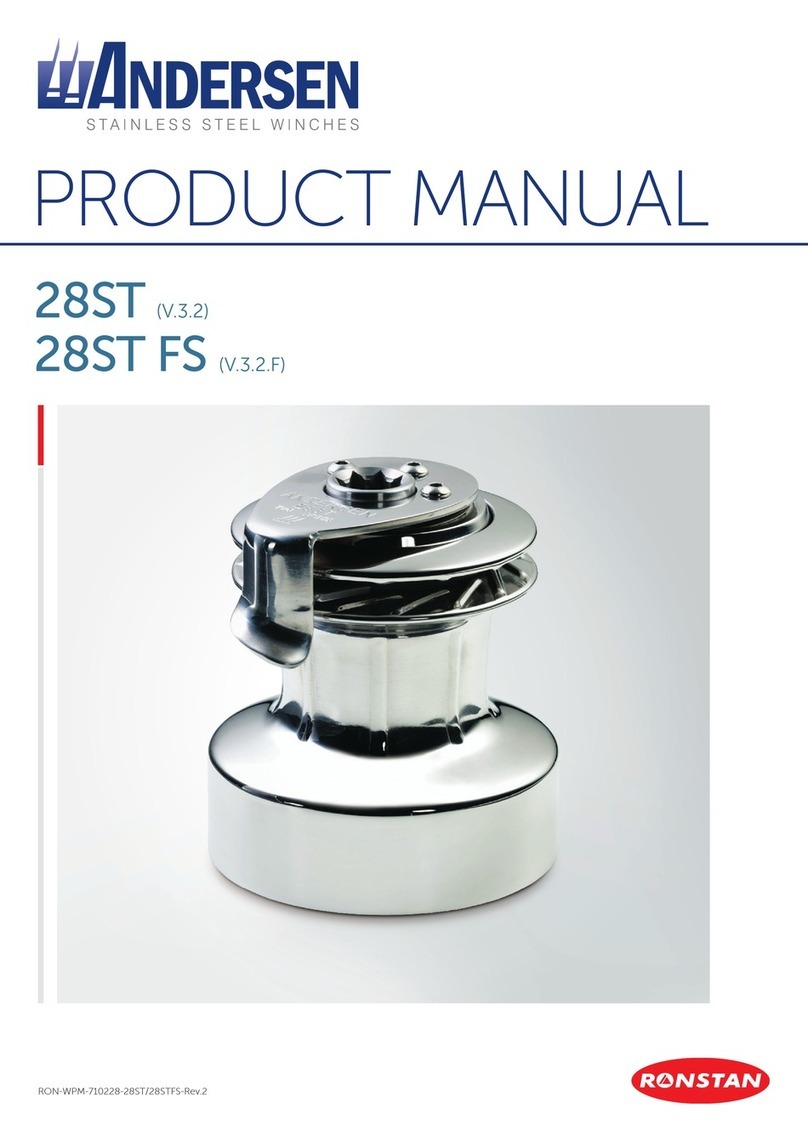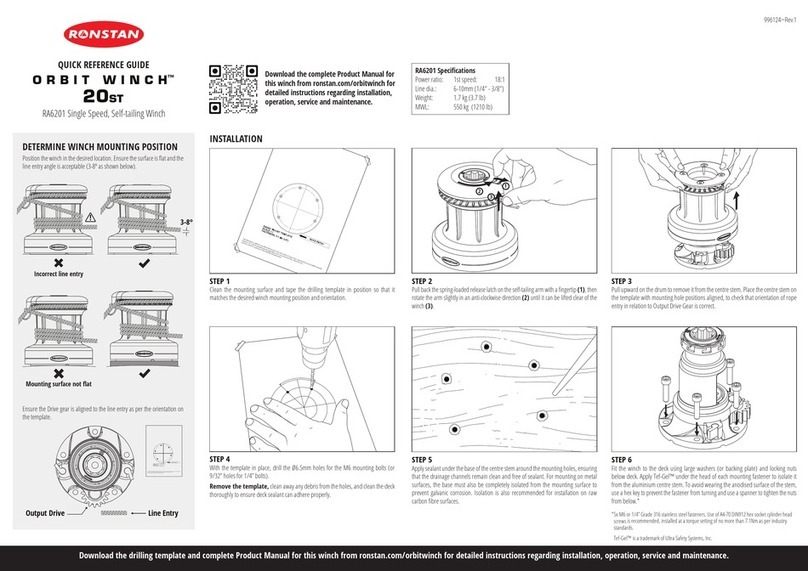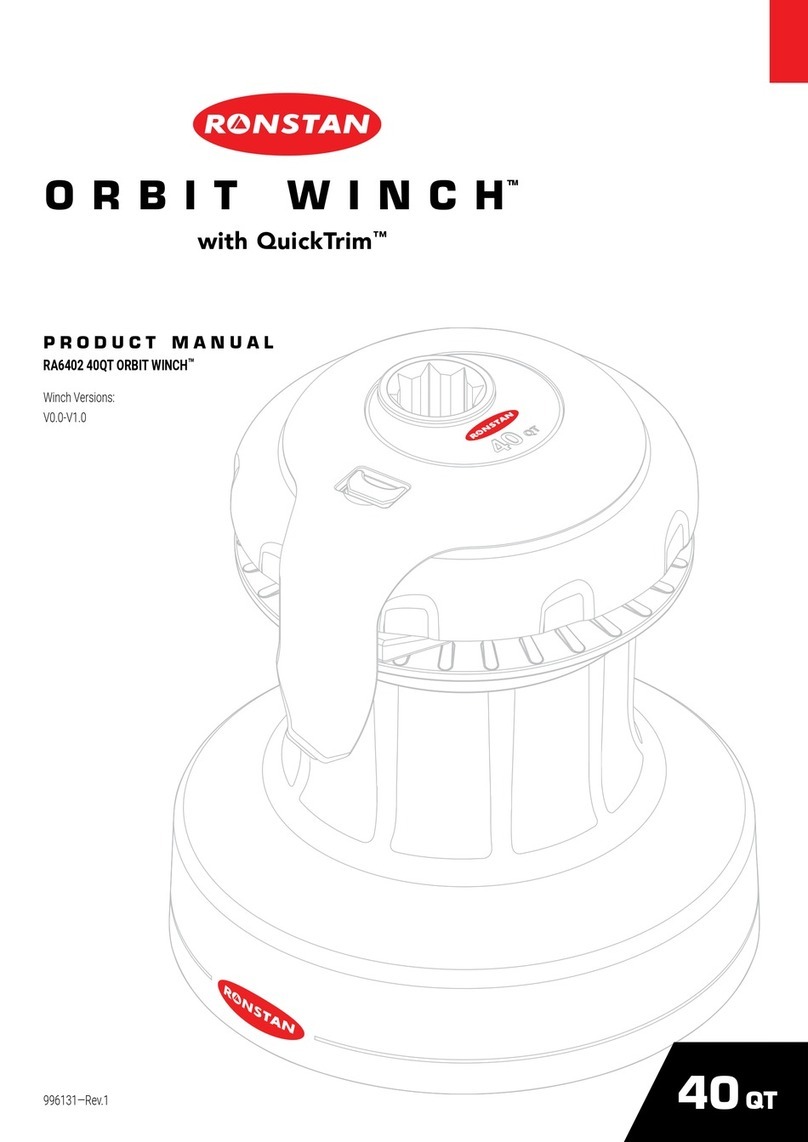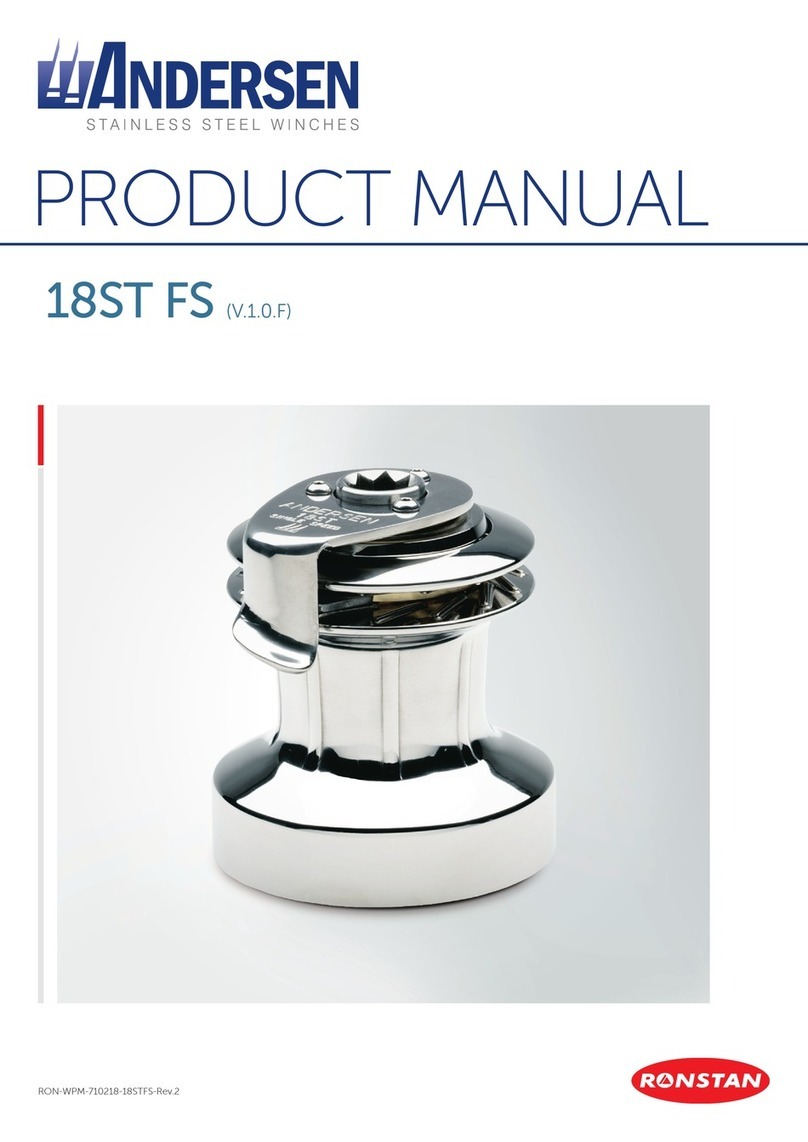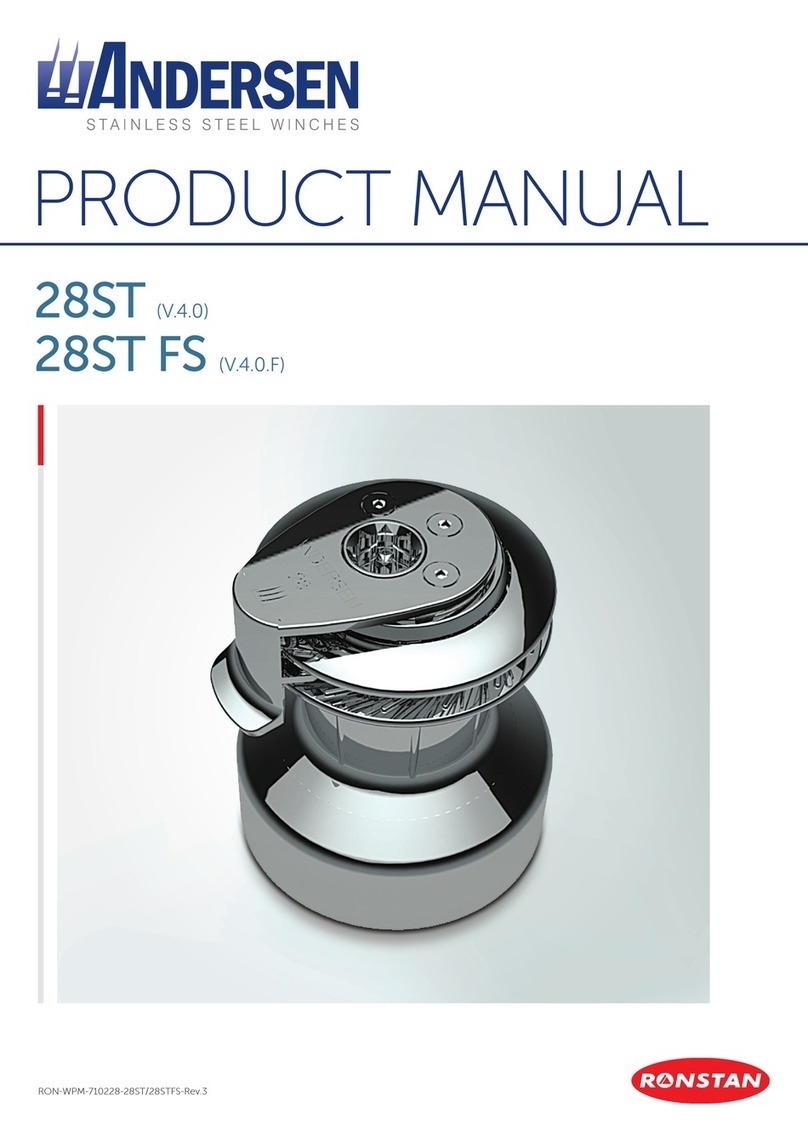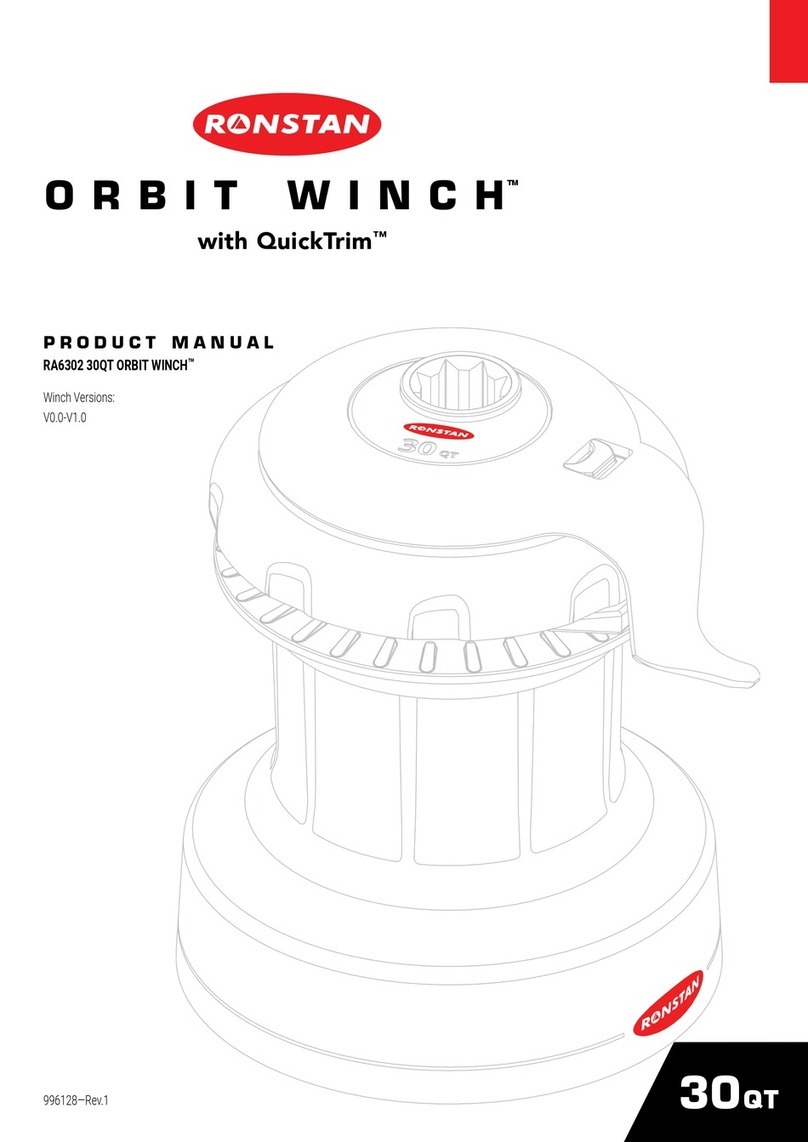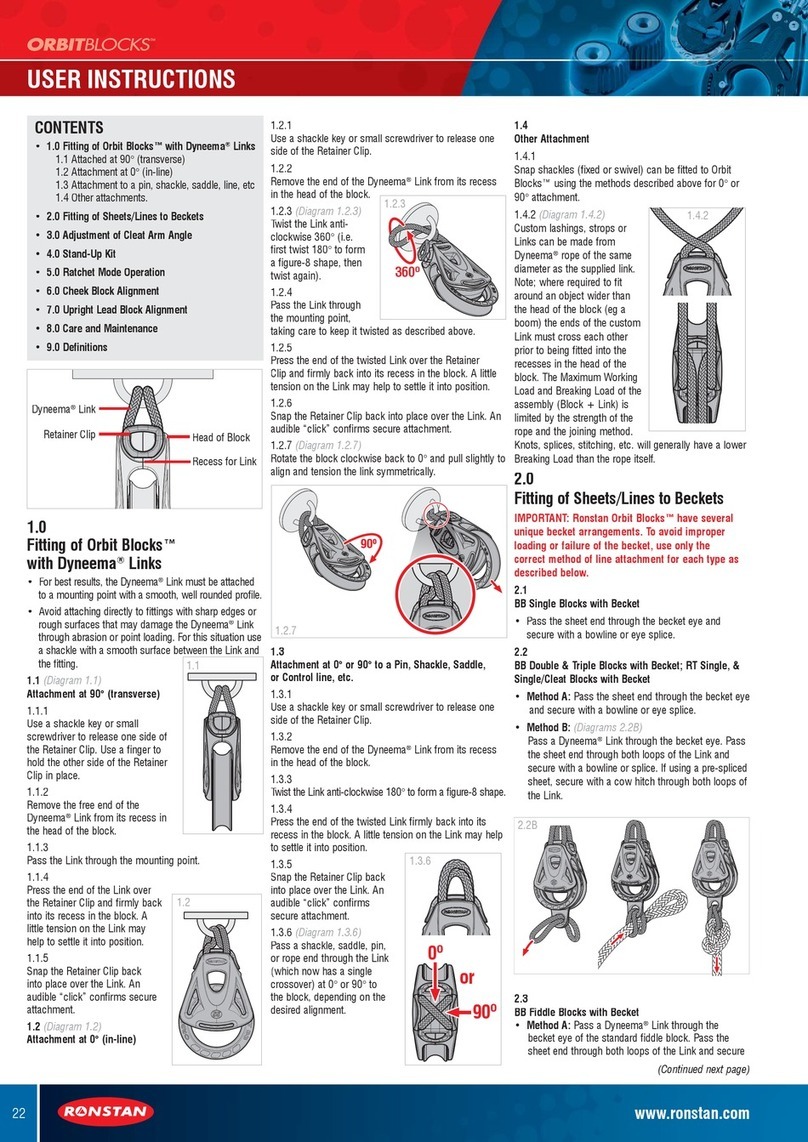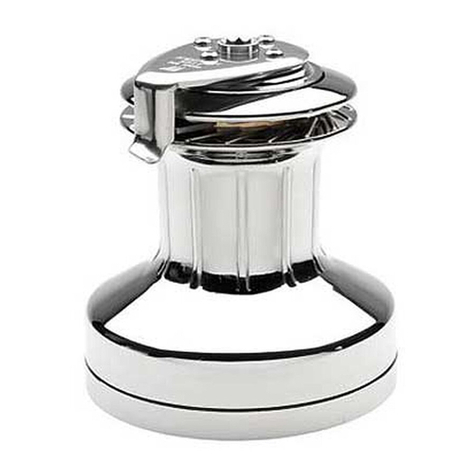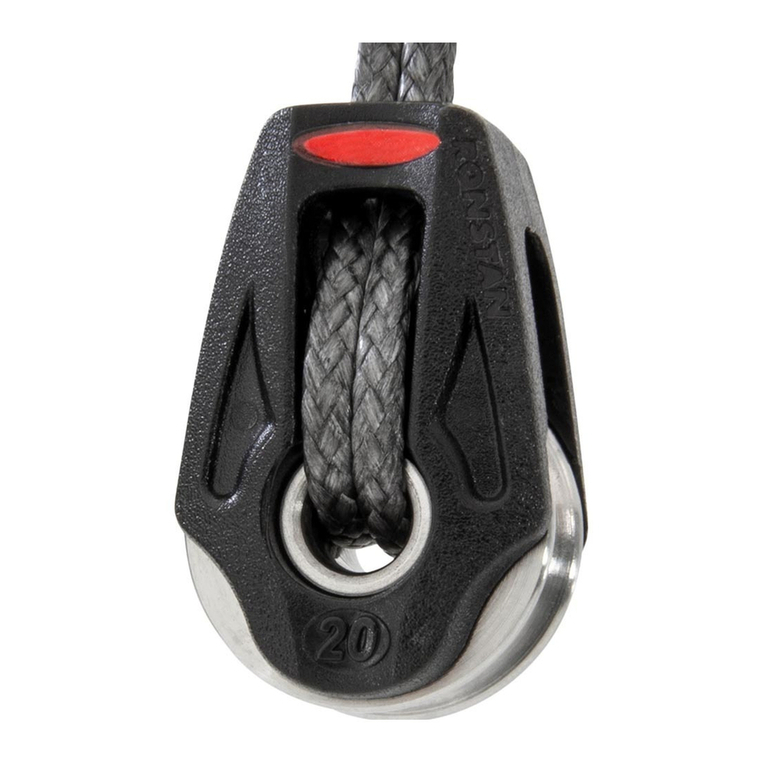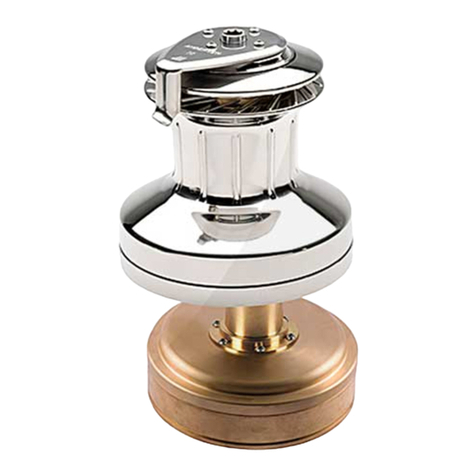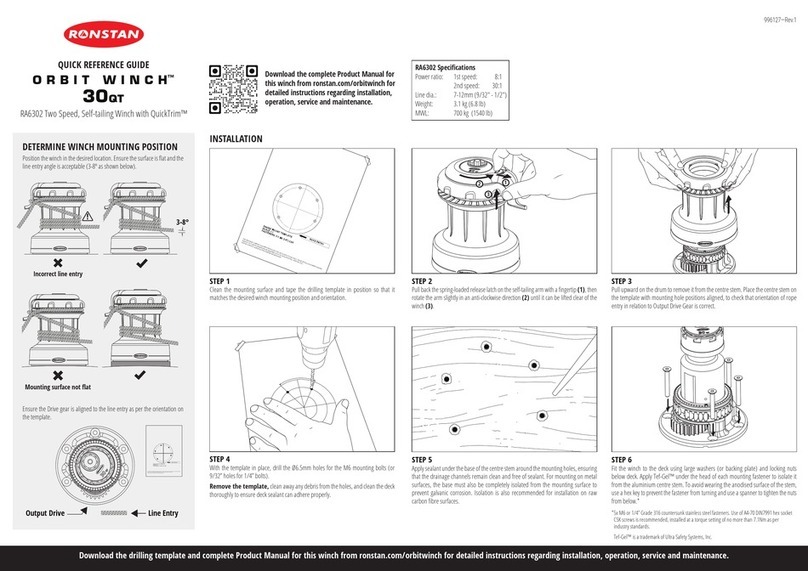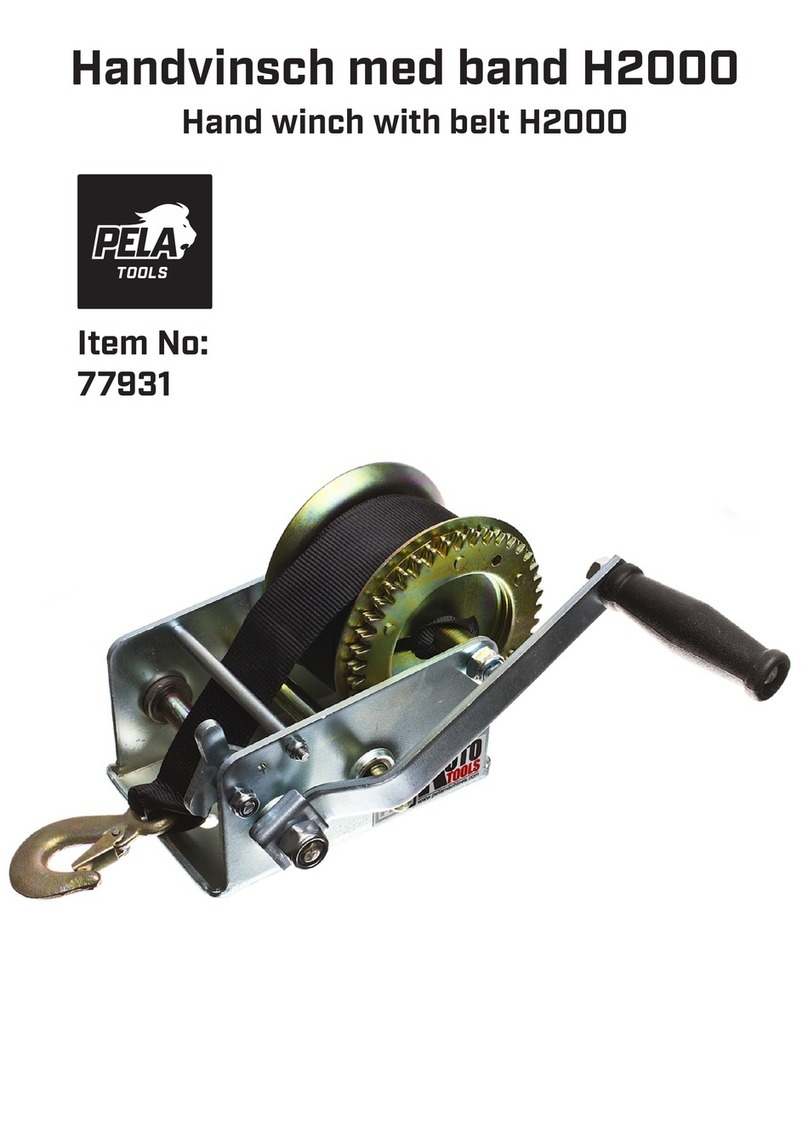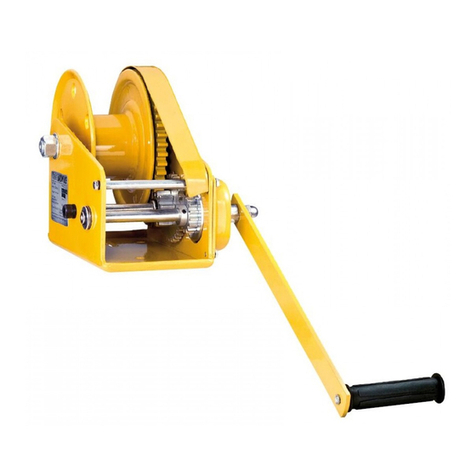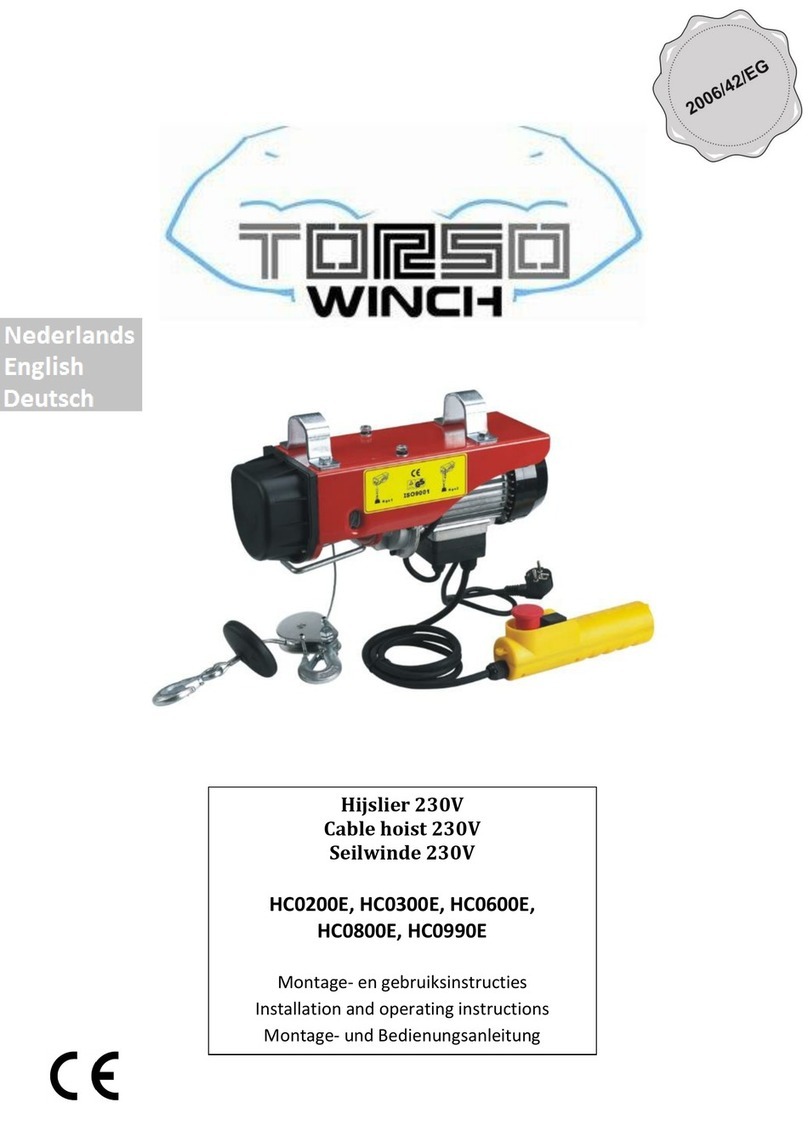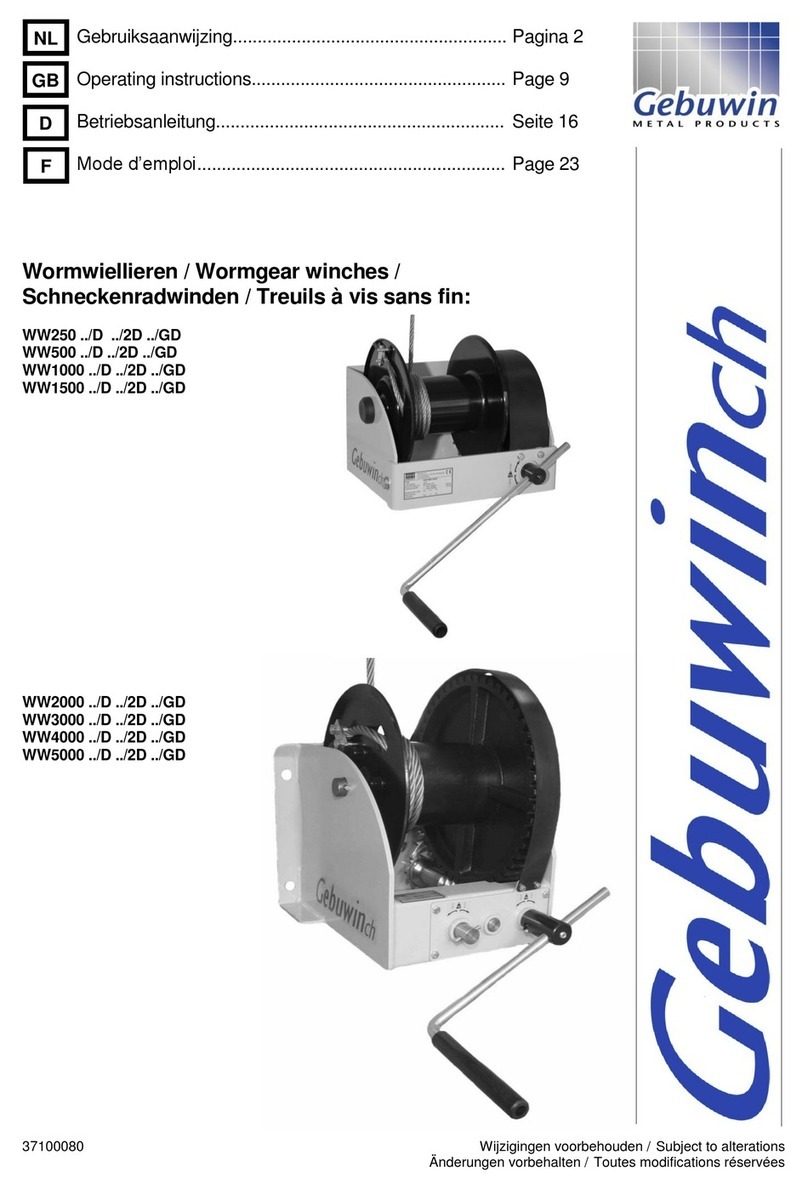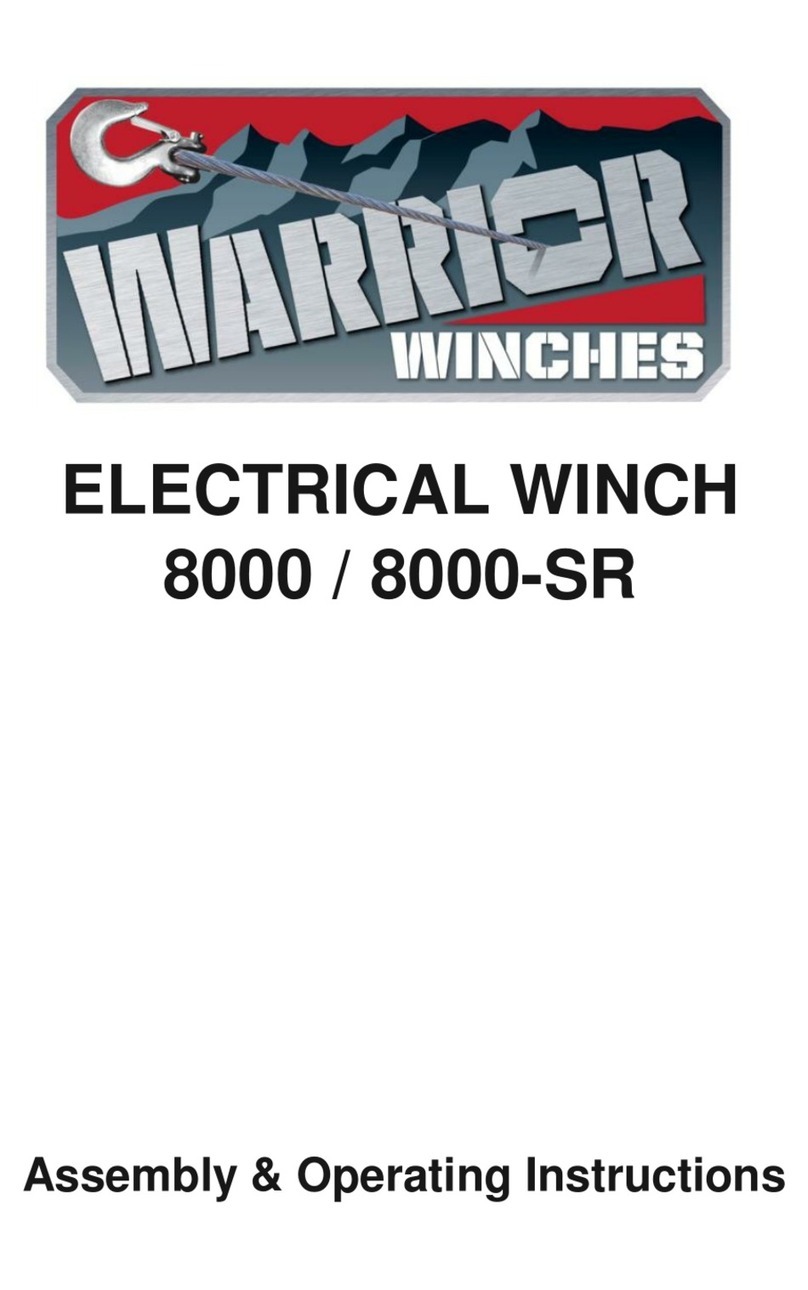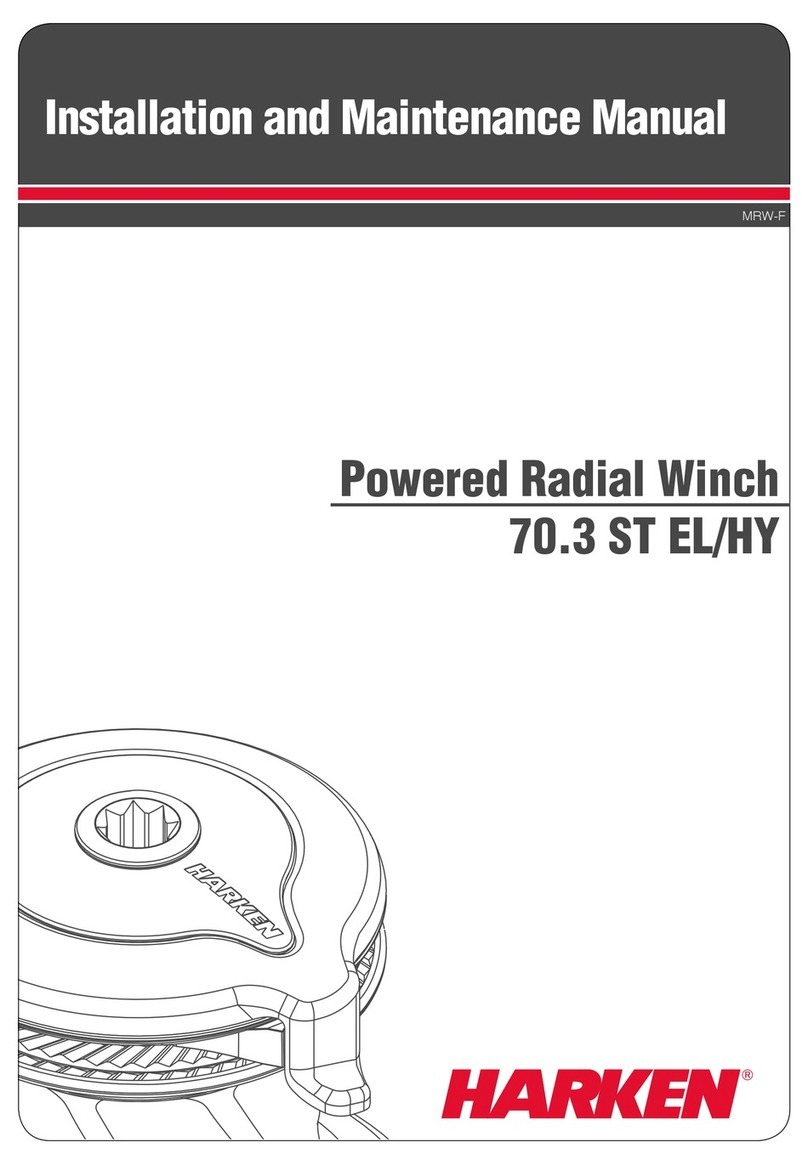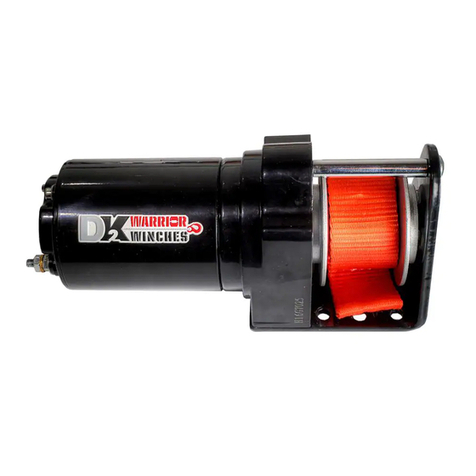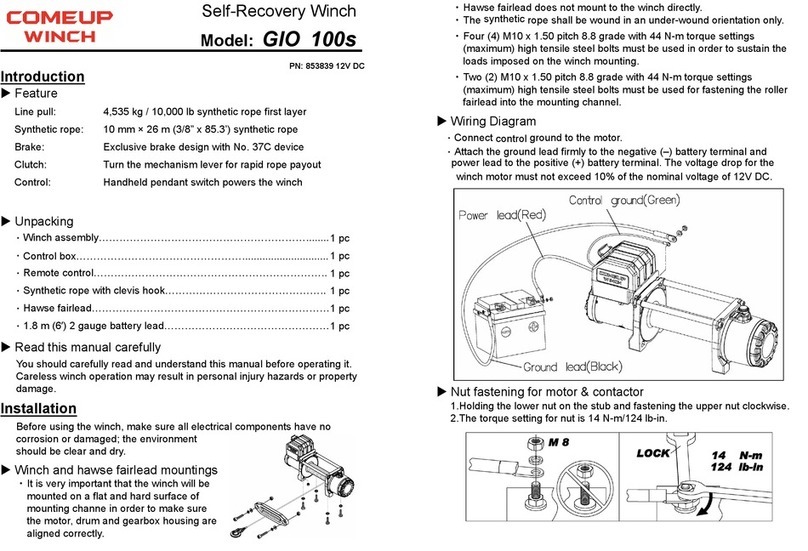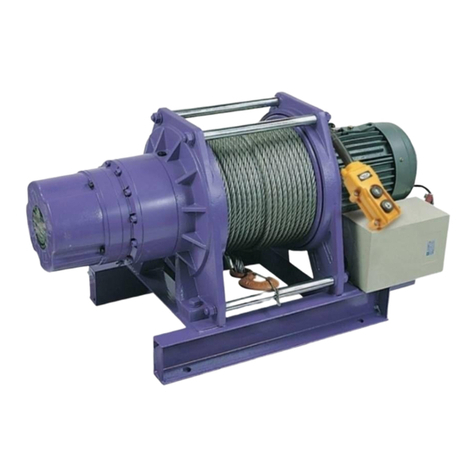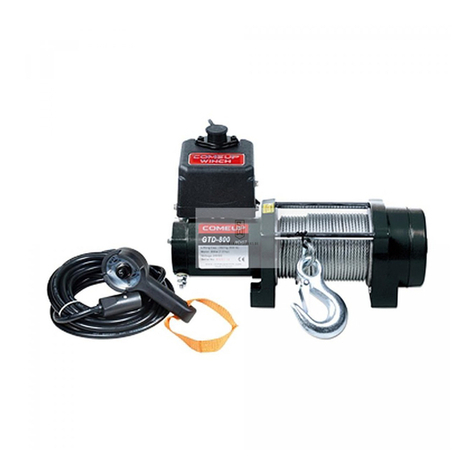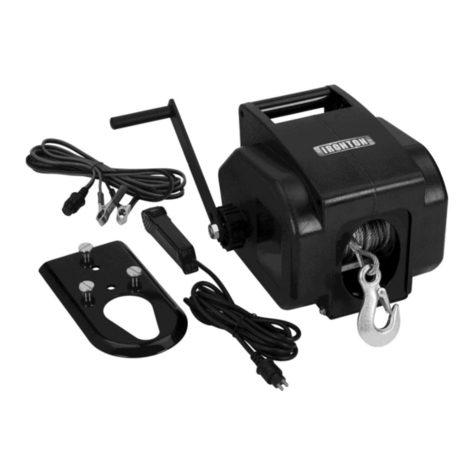
PRODUCT MANUAL
46/50ST Below Deck Compact Motor™
19
PRODUCT MANUAL
46/50ST Below Deck Compact Motor™
18
Troubleshooting
Compact Motor™ electric winches have built-in monitoring and protection features to enhance safety and avoid permanent
damage to the electronic and mechanical components of the motor and winch.
Automatic cut-out and reset
The integrated controller will cause the motor to stop without tripping the circuit breaker if one of the following conditions is
detected:
• Maximum pulling load exceeded. The motor will cut out if the pre-set maximum pulling load of the winch for electrical
operation is exceeded. Operation can resume within a few seconds when the load returns below the limit.
• Overheating. The motor will cut out if the temperature of the motor circuit reaches 60˚C (140˚F). Operation can resume
when the temperature returns to normal, which may take some time.
• Maximum continuous run time exceeded. The motor will cut out after running continuously for 4 minutes and 15
seconds. Operation can resume after releasing the push button for a pause of at least 30 seconds.
In these cases, the illuminated push button will ash, indicating that the controller will reset automatically when operating
conditions return to normal.
Fault detection and identication
If a fault occurs that requires investigation or intervention, the LED indicators on the circuit breaker can assist with
troubleshooting and diagnostics. These indicators are located along the edge of the PCB, at the rear of the circuit breaker as
shown in step 9 of this manual.
FAULT POSSIBLE CAUSE ACTION
Excessive vibration or noise
from motor/gearbox unit.
Drive shaft housing not mating
properly with octagonal recess
in deck plate, clamping ring not
tightened properly.
Ensure proper assembly with deck plate, and
sucient clearance with through-deck hole – see
step 3. Ensure clamping ring is fully tightened
before inserting and tightening locking grub screw.
Motor stops;
push button LED ashes
The motor has cut out after
reaching the pre-set maximum load
for electrical operation of the winch.
Release the push button and run the winch with
reduced load.
Motor circuit overheated;
temperature above 60˚C (140˚F).
When the motor has cooled down suciently (this
may take some time), status will automatically
reset to normal and the winch will be ready for use.
Ensure adequate ventilation around the motor.
Running time has exceeded +/- 4
minutes.
Release the push button and start again after
30 seconds.
Damaged control cable (push
button to motor). Replace cable if necessary.
Motor will not start; push button
LED not illuminated.
Circuit breaker and/or battery
switch may be “OFF”. Check and switch to “ON”.
No power supply to motor. Check power cables are properly connected to the
battery and circuit breaker.
Push button disconnected. Check control cables for push button and motor
are connected.
Motor will not start; push button
LED is illuminated.
Incorrect or insucient voltage in
power supply to motor. Restore normal voltage to power supply.
Damaged control cable (push
button to motor). Replace cable if necessary.
Circuit breaker trips and switches
to OFF after being reset.
Refer to LED Status Code table in
this section of the manual.
Address fault identied in LED Status Code table
and reset the circuit breaker.
Incorrect or insucient voltage in
power supply to motor.
Charge or change battery.
Check terminal connections.
Restore normal voltage to power supply and reset
the circuit breaker.
Thermal sensor wires disconnected
or damaged.
Re-connect thermal sensor wiring or replace if
damaged.
Motor circuit severely overheated;
temperature above 70°C (158˚F)
trips circuit breaker to OFF.
When the motor has cooled down suciently (this
may take some time), status will automatically
reset to normal and the winch will be ready for use.
Ensure adequate ventilation around the motor.
If problem persists or re-occurs contact your
Andersen dealer.
Circuit breaker trips and switches
to OFF while operating the winch.
Refer to Status Code Table in this
section of the manual.
Address fault identied in LED Status Code table
and reset the circuit breaker.
Green LED on circuit breaker does
not illuminate when circuit breaker
switched to ON, or ashes every
20 seconds in normal use.
MINUS wire from circuit breaker to
battery terminal is disconnected or
damaged.
Check cable and terminal connections at circuit
breaker and battery.
PCB or its terminals may be
damaged.
Contact your Andersen dealer, replace PCB if
necessary.
Circuit breaker trips, switches to
OFF and no status code ashes.
Current draw exceeds maximum
rating of circuit breaker.
Check electrical installation and ensure connections
to circuit breaker are correct.
Water drips from drain holes near
the base of drive shaft housing,
just above the motor/gearbox
unit.
May indicate water ingress through
drive shaft lip seal.
Follow the instructions in the service kit for lip
seal replacement provided with your Compact
Motor™, or contact your Andersen dealer for
assistance.
Troubleshooting Guide












